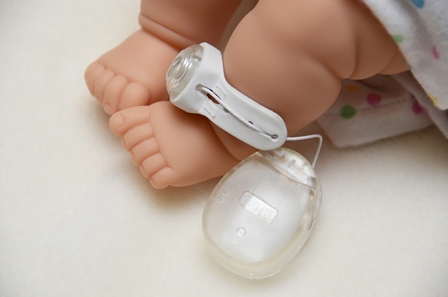
Designing and building a 1.8 million square foot acute care hospital facility presents many operational challenges. Workflows, supply delivery routing and environmental efficiency are just a few – as is emergency preparedness. For the planning team at Toronto’s new Humber River Hospital (HRH), scheduled to open in October of 2015, adapting the hospital’s existing emergency codes and procedures for the new building has been a critical project.
According to Mike Orrico, Humber’s Director of Emergency Preparedness, “Taking current safety and emergency policies and procedures that were developed for our old buildings, and ensuring they are revised to be relevant in our new facility is a huge challenge. Moving day is a hard deadline for us – by that day these must all be complete, comprehensive and thoroughly tested to ensure 100 per cent reliability.”
To ensure moving day goes smoothly, Orrico and his team have been hard at work on emergency preparedness, but they’ve had help. “We’ve had a great partnership with Toronto Fire, Toronto Police Services and Toronto EMS, as well as other experts,” he explains, “Developing policies and procedures to help ensure the safety and security of everyone in the new hospital.”
Given the size and complexity of what will be North America’s first fully digital hospital, Orrico’s team is building a new Code Manual for staff, physicians and volunteers. “This manual is their guide on how to react in different code and emergency situations,” says Orrico. “There will be extensive on-site training starting in May of 2015, once we have possession of the building, so that when doors open on October 18, 2015, everyone is prepared to respond to an emergency situation in a seamless and coordinated effort.”
MORE: USING CANADA’S BLOOD SUPPLY WISELY
The new building will leverage state-of-the-art technology to minimize the risks in emergency situations, to ensure that affected units, staff and physicians, security and EMS personnel are connected and notified immediately of emergency location and details, as well as up-to-the-minute updates. Staff and physicians, security and code response teams will be alerted through PDA and computer alarms, while the public will be informed though electronic monitors throughout the hospital when appropriate.
Code Response teams will provide the support necessary to effectively respond to medical emergencies within the hospital. A Real Time Locating System (RTLS) with a ‘Nurse Call’ system will be implemented to further enhance safety in the hospital, including newborn foot monitors, and wrist monitors for at-risk adult and paediatric patients.
For community disasters – explosions, derailments etc. – HRH will be better equipped to respond thanks to its large decontamination capability. There will be a designated decontamination unit, as well as the ability to use the enclosed ambulance bay to decontaminate over 100 people at one time. In addition, if a local incident impacts the external air quality, the supply control system will switch from using external air to purified recirculated air.
“Ensuring life safety within the new hospital – for patients, for staff and physicians, for volunteers and visitors – is an absolute priority for my team,” says Orrico. “We all hope it never happens, but if that day does come, we will be ready. We will keep everyone safe and informed.”

